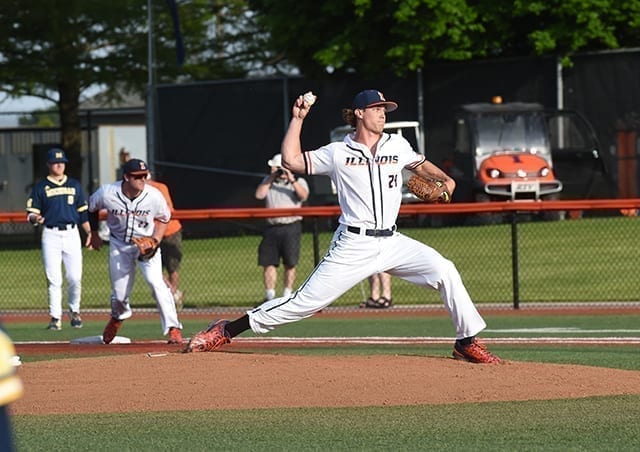With the draft in the books, the Baltimore Orioles now hope that the class of 2016 can breathe some new life into the farm system. Though far from perfect, this year’s class did address a few needst.
In considering both player potential and the organization’s needs—which is a little of everything, particularly pitching—I have assembled a list of three prospects that should not only sign with the Orioles, but fill an organizational hole.
(You can discuss this on the BSL Board here.)
Cody Sedlock, right-handed pitcher (1st round—27th overall)
It remains to be seen if the Orioles’ pitcher-exclusive selections on day one will pay off, but Sedlock—who topped a trio that was rounded out by Keegan Akin and Matthias Dietz—looks like a good value. Most pre-draft reports indicate that he regularly touches 91-93 mph with his fastball, which is complemented by a good slider, and an improving curveball and changeup combination.
Stuff wise, Sedlock might not stand out against his peers in the Orioles’ system—a healthy Hunter Harvey, for instance, would probably still top him on most prospect lists—but he offers about as much potential to start as anyone currently in the team’s minor league ranks. If he can continue to build upon his development at Illinois, Sedlock might be the polished pitcher the Orioles have long awaited.
Keegan Akin, left-handed pitcher (2nd round—54th overall)
After pitching through a lat injury in his sophomore year, Keegan was healthy this year and flashed plenty of potential at Western Michigan. Most reports agree that, while his ceiling might not put him at the top of the rotation, he should have the three-pitch mix needed to become a starter, with his fastball complimented by a changeup and a slider.
In some organizations, that would not warrant significant hype, but the Orioles have lacked a polished left-handed starter. If the team can allow Akin to build off his success this season, he may very well follow Sedlock as a college pitcher whose durability and feel for pitching allows him to move quickly.
Austin Hays, outfielder (3rd round—91st overall)
Baseball America is particularly high on Hays, having ranked the Jacksonville University prospect as one of the best in Florida and labeling him as a player with the tools “to become a prototypical right fielder” in the big leagues. While college outfielders with a good bat can be a dime a dozen in the draft, Hays offers a little more potential on both sides of the ball.
Most other reports I could find backed Baseball America’s observation, citing Hays’ arm strength as a primary asset. Ever since Nick Markakis’ departure, the Orioles have struggled to find stability in right field, and the farm system offers no immediate solutions. If/when he signs, Hays’ defensive abilities would give an edge against his peers in the farm system, and if his bat matches his glove work, he could move quickly.
Other Picks to Watch:
- Matthias Dietz, RHPs (2nd—69th) and Brenan Hanifee (4th—121st): Dietz and Hanifee are both works in progress, but each offers their own intrigue. While Dietz has managed to increase his velocity over the last few years, Hanifee offers solid command of his fastball and room to grow into his 6’4” frame. Both pitchers have college commitments, with Dietz—a pick out of John Logan Community College— slated to transfer to Texas Christian University while Hanifee could go to East Carolina, so the Orioles will have to work aggressively to sign both.
- Alexis Torres, shortstop (5th—151st): The consensus seems to be that Torres will profile as a major league shortstop on defense, but might not have the bat to play every day. However, as a high school pick, he could turn a corner with experience. Therefore, if he signs, do not be surprised to see Torres eased into the professional ranks so that the Orioles can give his offense time to develop.
- Ryan Mosley, RHP (8th—241st): Mosley’s premium velocity has always given him potential, but the sense is that his inconsistent secondary offerings will limit him to the bullpen. The Orioles have not always had success in developing pitchers of this type into starters, so how they handle Mosley will be interesting. If he sticks in the rotation, Mosley may need a little bit of time at a lower level before moving up, but if he can get just enough out of either his slider or changeup, a move to the bullpen could result in a quick climb through the minors.

Orioles Analyst
A graduate of the University of Massachusetts, and Loyola University; Spedden has previously spent time in the Washington Nationals organization as a videographer for the Hagerstown Suns. As a blogger, Spedden is an Editor / Writer for the Suns fan club. Additionally, he contributes to The Nats Blog as a prospect writer, and Ballpark Digest. For BSL, Spedden covers the Orioles Minor Leagues. Co-Host of The Verge: https://anchor.fm/the-verge
